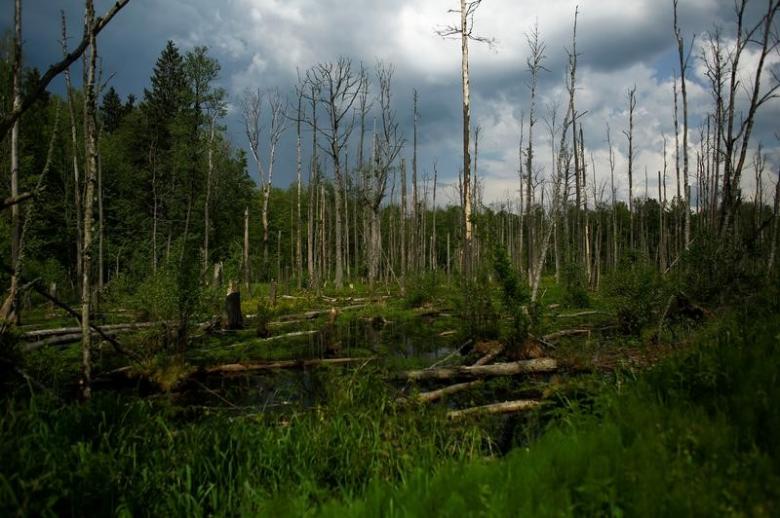
The PTI government in K-P has endeavoured to break away from this trend by actually implementing ‘green’ on the ground. Its ‘billion-tree tsunami’ (BTT) has been a trailblazer which has not only realised an impossible dream but is also turning the tide of ecological ruin, not just in K-P but all of Pakistan as its success has also compelled other parties and provincial governments to start thinking green.
The success of the BTT is, however, not just an indicator of K-P’s performance but also a matter of national pride with global recognition. After almost four years of implementation, the project has overshot its target of a billion trees and has restored over 600,000 hectares of degraded forest in K-P, thereby enhancing the forest cover in the province by another 6% of land area. In addition, it is now the largest-ever eco-investment made in Pakistan and a project which has achieved its target before the stated time of five years and much below the planned budget — reducing it from Rs22 billion (original PC1 figure) to Rs12.5 billion. It remains the only public-sector project to voluntarily subject itself to an independent third-party performance audit and perform brilliantly on it. Also through this project, K-P became the first global entity to successfully achieve its forest restoration target under the global Bonn Challenge which is an internationally-recognised feat. This innovative project also delivered economically by generating over 500,000 ‘green’ jobs, going mostly to unemployed youth and rural women in the province. The world’s leading environmental organisations, including the WWF, remain involved with various facets of the project and have given it unanimous and widespread acclaim and acknowledgment.
The BTT initiative was based on good intentions for a greener Pakistan and owing to the remarkable on-ground achievement it has also now turned into a political advantage for the PTI — which can claim the strongest proven ‘green’ credentials of any political party in Pakistan. This connotation, however, has a blowback which the project is now facing from a frustrated ruling party. Subsequently, the politically-motivated blowback over the past week has seen a media blitz focused on creating controversy along three misguided myths about the BTT which need to be truthfully confronted.
The first misguided myth is that the inclusion of natural regeneration in the BTT is not fair play and inflates the actual performance. The media houses propagating this unfounded myth need to understand the techniques for forest growth which are scientifically accepted as afforestation, reforestation and avoiding deforestation (IPCC forest growth techniques). The BTT employed a mixture of ‘all three’. Firstly, the timber mafia was strategically confronted and pushed back to halt the threat of deforestation in K-P and create space for the degraded forests to regenerate, secondly 40% of the target was achieved through afforestation or new plantations on both public and private lands, and finally 60% of the target was achieved through restoring forests with assisted natural regeneration. This is globally established as the most effective, quickest and cheapest way of forest restoration and, subsequently, the BTT planned and implemented this technique through a system of community-aided protection of forests.
To date 4,509 enclosures of forests have been created and managed by specially-created community village development committees, which have been allowed access for firewood, provided alternative livestock fodder where required and given the funds to hire community forest guards. None of this was present before 2013 and it is this effectively planned technique which ignited natural regrowth where none existed. It is a recorded fact (GIZ report) that up to 2013, 74% of K-P’s natural forests had zero natural regrowth while 78% of these were grossly understocked. In contrast, under this project the extent of the recorded natural regeneration in forests almost doubled (WWF reports) in three years. Resultantly, within the project, the reliance on natural regeneration actually went up from the originally planned 50% to the now implemented 60% of the Billion-Tree target — and all this translated into the cost of the project drastically coming down to around Rs12.5 billion, and the substantial saving was actually transparently passed on back to the province.
Also, from day one, assisted natural regeneration was always the main focus for the reasons cited above, and included in the main project PC1, all independent audit reports as well as all presentation briefs given to the media and all articles written on the subject — all in open and transparent public domain. So the mainstay of the myth that this regrowth would have happened automatically, without creating the conducive community-based protective environment or that these facts about natural regeneration were glossed over or ‘hidden’ is utterly unsubstantiated.
The second misguided myth is that only 20% of the project has been checked by the performance auditor while certifying the billion. In addition to misguiding the public on scientific forestry, the promoters of this falsehood are also cheating the public on statistical techniques. Performance audits worldwide are done with varying sample sizes depending on the confidence level required for the results. In this case, the sample size was taken by the independent third-party auditor to ensure that the confidence level for the results was over 95% correct. What this means is that the 20% plants checked physically actually substantiates the correctness for almost 100% of the billion-tree target. This is pure statistics, clear and simple.
The third is that the plants have been bought at high prices. But the facts are contrary to this. In 2013, K-P’s nurseries had a growing stock of only 20 million plant saplings/year which had to be increased to 250 million/year in two years to get the billion trees. This only became possible through a public-private model which was developed to encourage and incentivise private sector nurseries. In particular, this included an innovative ‘youth nurseries’ programme that used the incentive of a buyback agreement at a fixed sapling price and partial advance payments to provide decent self-employment to youth as well as rural women. The fixed prices for this buyback were set at the same price at which the plants were being bought by the department from its own nurseries, at that time. This innovative programme not only created the expanded supply of plants but also generated a major portion of the 500,000 ‘green’ jobs created.
The three misguided myths being propagated to damage the project’s credibility are, thus, not only factually unfounded and baseless but a disservice to environmental conservation in Pakistan. The Billion Tree Tsunami is not only a source of ecological pride and a gift to our future generations but also a project that instills hope that a cleaner and greener Pakistan is not only possible but also achievable with the right intentions and political commitment.
Published in The Express Tribune, February 18th, 2018.
Like Opinion & Editorial on Facebook, follow @ETOpEd on Twitter to receive all updates on all our daily pieces.













































COMMENTS (6)
Comments are moderated and generally will be posted if they are on-topic and not abusive.
For more information, please see our Comments FAQ